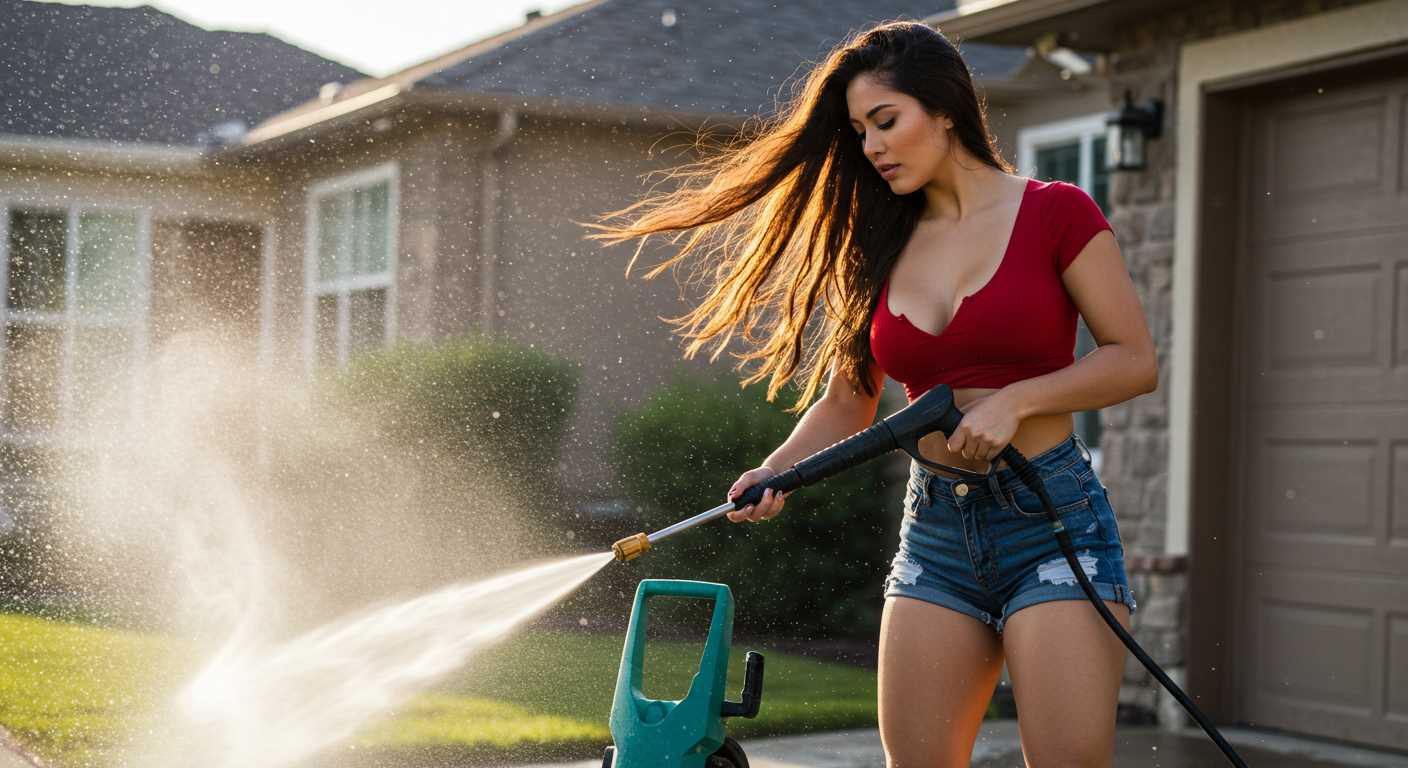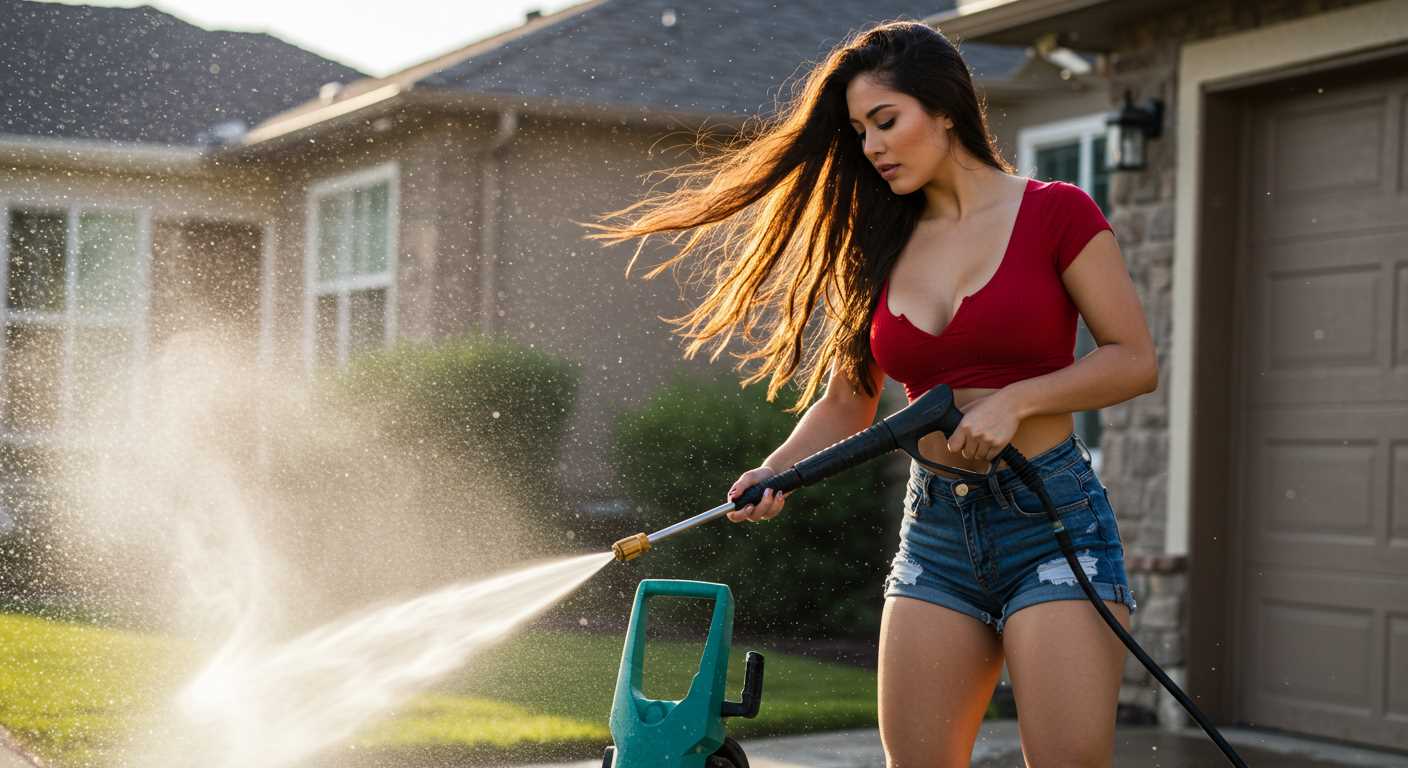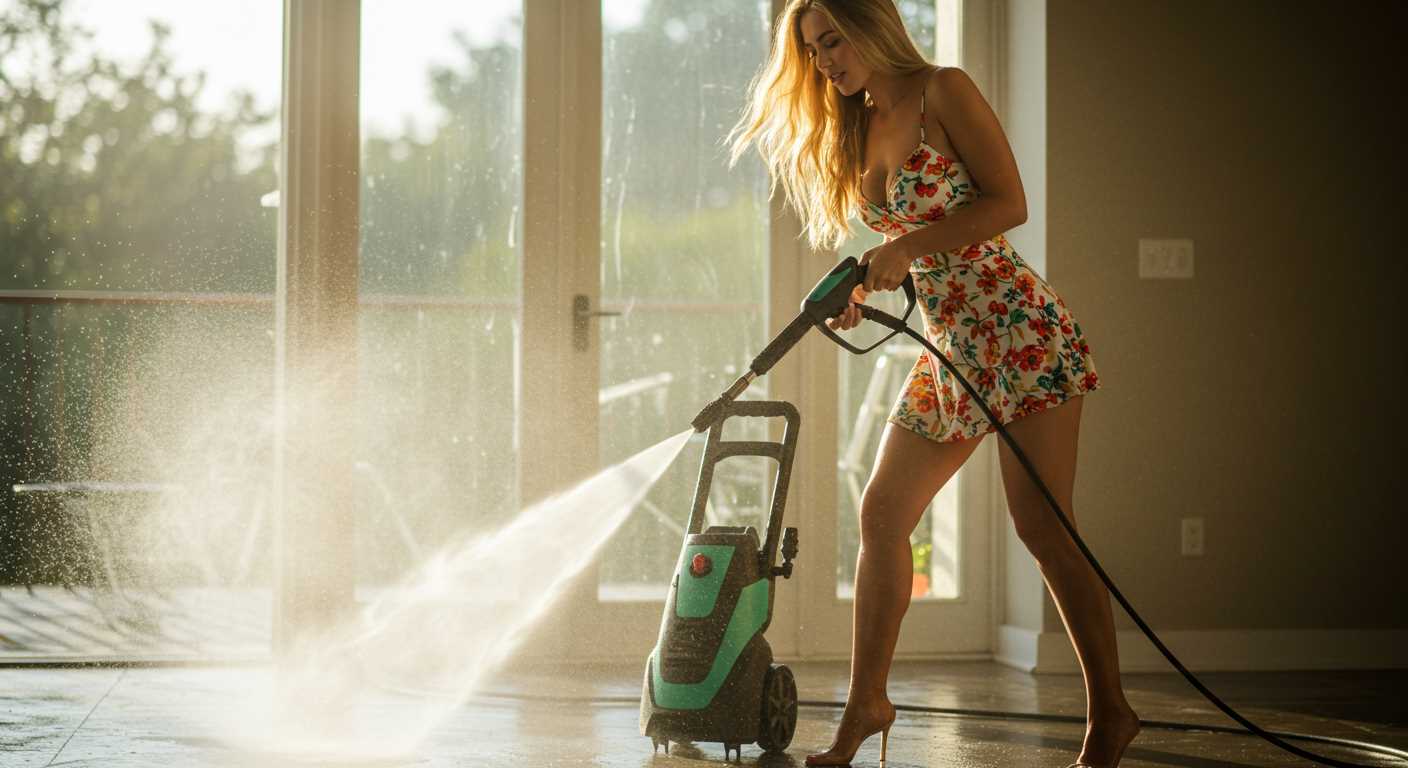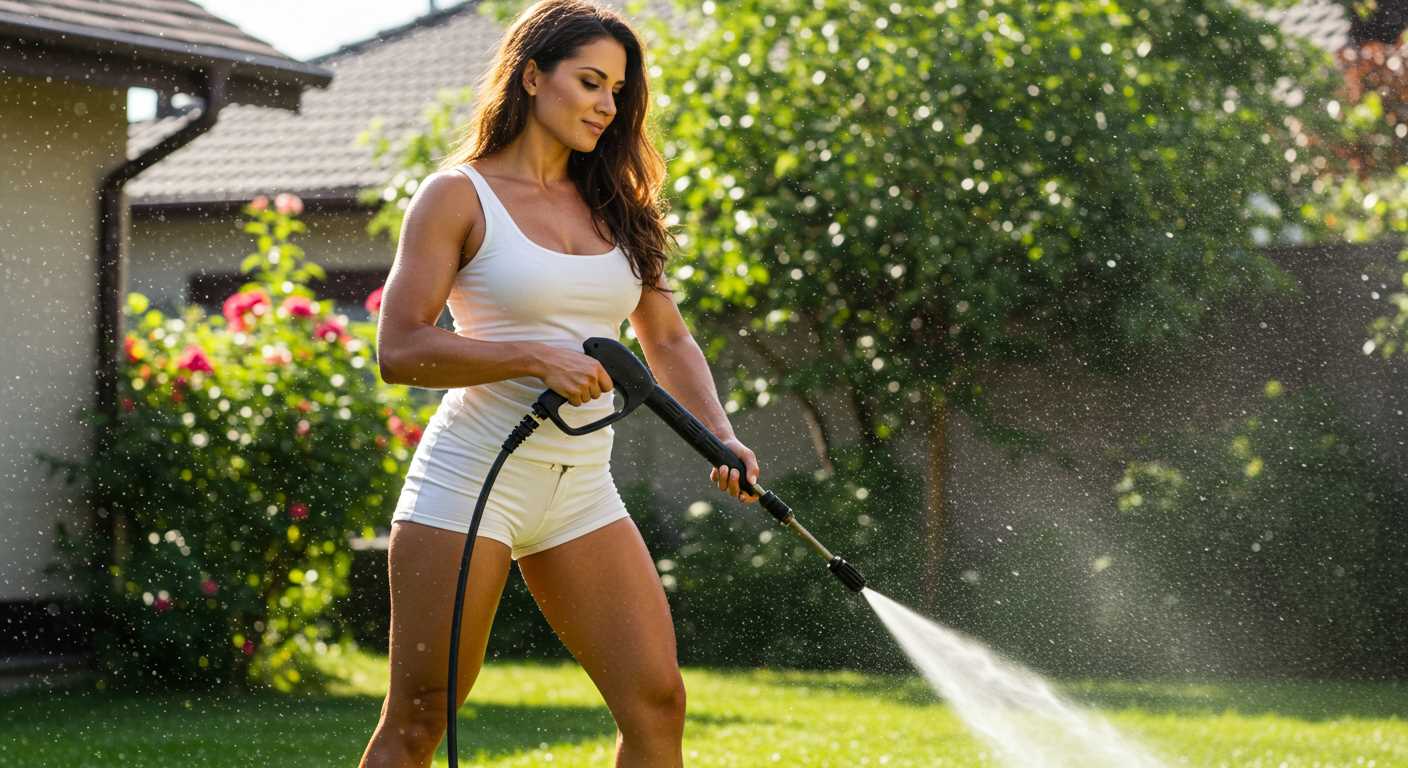




For an immaculate outdoor area, the right approach is vital. The first step involves gathering your materials: a high-pressure cleaner, appropriate nozzles, and protective gear like goggles and gloves. Before beginning, ensure the area is free from furniture and other objects that could obstruct the process.
Choosing the correct nozzle is critical. A wider spray angle is suitable for larger surfaces, while a narrow jet is perfect for stubborn stains. My experience has shown that starting with a wider angle helps to remove loose dirt before tackling tougher marks with a more concentrated spray.
Once you’ve set up, begin from one corner and work your way around systematically. This prevents missed spots and ensures thorough treatment. It’s important to maintain a consistent distance of around 30cm from the surface, adjusting as necessary for tougher stains. I recall one occasion where I underestimated the power of the nozzle. A bit too close, and I ended up with a noticeable divot in the stonework! Always test a small area first to gauge the impact.
For stubborn grime, applying a biodegradable detergent can enhance results. Let it dwell for a few minutes before rinsing. This method not only lifts the dirt but also helps protect your surfaces. After rinsing, a quick inspection will reveal areas needing extra attention. A second pass may be necessary, but this time, you can adjust your technique based on what you’ve learned from the first round.
Concluding your cleaning session with a thorough rinse ensures no residue is left behind. When the job is done, step back and admire your revitalised space. A well-maintained outdoor area not only enhances your home’s aesthetic but also prolongs the life of your surfaces. Trust me, the effort is absolutely worth it!
Selecting the Right Equipment for Your Outdoor Space
For optimal results, look for a unit with a rating between 1300 and 2300 PSI, tailored to your specific needs. I’ve found that machines in this range strike the perfect balance between power and safety for various surfaces. For instance, when I cleaned a friend’s stone patio, a 2000 PSI model removed years of grime without damaging the material.
Electric vs. Gas Models
Electric models are often lighter and easier to manoeuvre. They’re perfect for smaller jobs and residential spaces. I remember using a compact electric unit for my own driveway; it was surprisingly effective. On the other hand, gas models provide more power and are suitable for larger areas or tougher stains. During a community project, a gas unit effortlessly tackled a neglected concrete walkway, showcasing its superiority in heavy-duty tasks.
Attachments and Accessories
Consider additional nozzles for versatility. A rotating nozzle can significantly enhance your cleaning capabilities, especially on textured surfaces. I once equipped my machine with a turbo nozzle, and the difference was remarkable–it cut through stubborn dirt with ease. Don’t overlook surface cleaners either; they can save time and ensure an even finish on large flat areas.
Preparing the Area Before Washing
Clear the area thoroughly. Remove furniture, pots, and any other items that could obstruct your work. I once made the mistake of leaving a few planters in place, which resulted in a messy clean-up later when water sprayed everywhere. It’s much easier to have a completely unobstructed surface.
Check for loose or damaged materials. Inspect the flooring for cracks, loose tiles, or wooden boards that might need attention. During one of my cleaning sessions, I discovered a few loose tiles that I hadn’t noticed before. Addressing these issues beforehand saved me from further damage and additional repairs later.
Cover nearby plants and delicate features. If you have flower beds or decorative elements close to your workspace, protect them with tarps or plastic sheets. I’ve had a few unfortunate encounters where overspray affected my garden. A little preparation can go a long way in preserving your greenery.
Gather necessary tools and safety gear. Equip yourself with goggles and gloves to protect against debris and flying dirt. I once underestimated the power of a water jet and ended up with quite a few splashes in my eyes. Safety should always come first.
Consider the weather. Choose a day with mild conditions. I’ve often found that too much sun can cause cleaning solutions to dry too quickly, leaving streaks. A cloudy day can be ideal, as it allows for a more controlled cleaning environment.
Finally, if you’re dealing with wooden surfaces, check out this how to clean solid wood floors complete guide for tips on preserving the integrity of the wood while you’re working. Taking these steps will ensure a smoother and more effective cleaning process.
Choosing the Appropriate Nozzle for Different Surfaces
Selecting the right nozzle is key to achieving optimal results without damaging surfaces. For delicate materials like wood, a 40-degree fan nozzle works wonders. It disperses the water over a larger area, minimising the risk of splintering. I recall a time when I accidentally used a narrower nozzle on my wooden deck, resulting in some unwanted gouges. Lesson learned: always check the nozzle angle.
When tackling concrete or brick, a 25-degree nozzle delivers the perfect balance of pressure and coverage. This nozzle penetrates grime effectively while avoiding chips or cracks. I’ve had great success using this on my old patio, where years of dirt had built up. The improvement was astonishing!
For tougher stains on concrete, a 15-degree nozzle can help. This narrow jet focuses energy on stubborn marks like oil or rust but requires caution. I’ve seen too many people damage their surfaces by holding the nozzle too close. Maintain a distance of at least a foot to prevent etching.
Lastly, for soft surfaces like plants or outdoor furniture, consider a soap nozzle. It allows you to apply cleaning solutions gently, providing a thorough clean without risk. I often use this when I need to refresh my outdoor cushions, ensuring they come out looking like new.
Always test on a small, inconspicuous area first. Each surface behaves differently, and a quick test can save time and potential damage. With the right nozzle, results are not just cleaner but also safer for your outdoor spaces.
Applying Detergent for Stubborn Stains
For those tough marks that refuse to budge, a quality detergent can be a game changer. I’ve had my fair share of battles with ingrained grime, and the right cleaning solution makes all the difference. Start by selecting a detergent specifically designed for outdoor surfaces. Read the label carefully to ensure it’s safe for the materials you’re working with.
Mix the detergent according to the manufacturer’s instructions. In my experience, a well-balanced solution not only activates quickly but also enhances the cleaning power. I usually opt for a bucket to mix the detergent and water, ensuring it’s thoroughly blended before application.
Next, apply the detergent generously to the stained areas. I’ve found that using a low-pressure nozzle for this step helps spread the solution evenly without causing damage. Allow the detergent to sit for about 10 to 15 minutes. This dwell time is crucial, as it allows the formula to penetrate the stains, breaking them down effectively.
After the waiting period, it’s time to rinse. Switch to a high-pressure nozzle and thoroughly remove the detergent along with the loosened dirt. I recommend working in sections to avoid the detergent drying out before you rinse it away. This method has saved me countless hours and made the process much smoother.
For particularly stubborn spots, repeat the application and rinsing process. Sometimes, a second or even third application is necessary to achieve the desired result. Patience pays off, and the outcome will be worth the effort. Keep an eye on the surface to ensure no damage occurs during the process, as certain materials can be more sensitive than others.
Mastering the correct pressure washing technique
Angle your nozzle at approximately 45 degrees to the surface for optimal results. This positioning allows the force of the water to lift dirt, grime, and moss without causing damage. I often tell people to imagine a sweeping motion; this helps maintain an even application. Start from one side and move methodically to the other, overlapping each stroke slightly to ensure complete coverage.
Maintaining distance
Keep a distance of about 12 to 18 inches from the surface. This prevents any potential harm to the material while still delivering effective cleaning. If you notice stubborn stains not lifting, you can reduce the distance slightly but be cautious. I once got a little too close on a wooden deck, and it left marks that took ages to sand down.
Adjusting pressure settings
Adjust the settings based on the surface you’re working on. For example, concrete can handle a higher setting, while softer materials like wood require a gentler approach. I recall a time when I switched from a high setting on a patio stone to a lower one when I moved to the wooden steps. It made a significant difference in preserving the wood’s integrity.
For more guidance on selecting suitable equipment, check out my guide to finding the highest rated pressure cleaner pumps. This can help you understand which models work best for your specific tasks.
Lastly, always keep an eye on your surroundings. Ensure that windows, plants, and any delicate items are protected from the spray. An unexpected blast can cause damage, so a little precaution goes a long way. A tarpaulin over delicate plants has saved me from several mishaps in the past!
Understanding Safety Precautions During Cleaning
Always wear protective eyewear to shield your eyes from debris and splashes. I recall a time when I neglected this and ended up with a small stone in my eye. It wasn’t pleasant. Sturdy gloves are equally important; they protect your hands from chemicals and sharp objects. Footwear should be slip-resistant to prevent falls on wet surfaces.
Before starting, assess the area for potential hazards. Look for loose cables, fragile items, or uneven ground that might cause accidents. I once tripped over a garden hose while cleaning and learned to clear the area beforehand.
Maintain a safe distance from the nozzle’s spray. Standing too close can result in injuries or damage to surfaces. I’ve witnessed a colleague accidentally strip paint off a wall because he was too enthusiastic with the spray. Always keep the nozzle at least 2 feet away from the surface being treated.
Be cautious with electrical equipment. Ensure that extension cords are rated for outdoor use and are not frayed. I’ve had a few close calls with water getting into electrical connections, leading to short circuits. Always check your equipment before starting.
When using detergents, choose environmentally friendly options and read all labels. I’ve had experiences with harsh chemicals that not only harmed the surroundings but also caused skin irritation. Always rinse thoroughly after application to avoid residue.
| Precaution | Description |
|---|---|
| Protective Eyewear | Prevents eye injuries from debris. |
| Sturdy Gloves | Safeguards hands from chemicals and sharp objects. |
| Slip-Resistant Footwear | Reduces the risk of slipping on wet surfaces. |
| Area Assessment | Identify hazards before beginning. |
| Safe Distance | Maintain at least 2 feet from the surface. |
| Electrical Safety | Use outdoor-rated extension cords, check for damage. |
| Detergent Use | Opt for eco-friendly products and rinse thoroughly. |
Lastly, never point the nozzle at yourself, others, or pets. It’s easy to forget in the moment, but I’ve had a friend accidentally spray himself while demonstrating the tool. It’s not only a waste of time but can lead to serious injury.
Post-cleaning care for your patio
After tackling the grime, it’s vital to give your outdoor area some love. A few simple steps can ensure longevity and maintain its pristine condition.
- Drying: Allow the surface to dry completely before placing any furniture back. This prevents moisture from getting trapped, which can lead to mould or mildew.
- Sealing: Consider applying a sealant tailored for your specific material. This creates a protective barrier against stains and weather damage, extending the life of your surface.
- Regular Maintenance: Schedule routine inspections to catch any signs of wear or stains early. A quick rinse with a hose can keep dirt at bay.
- Furniture Care: Clean your outdoor furniture to complement the restored look. Use a suitable cleaner for the material to avoid damage.
- Weed Control: Check for any weeds or grass sprouting in the cracks. Prompt removal helps maintain the aesthetic and prevents further growth.
In my experience, a little bit of care goes a long way. After a thorough wash, I always make it a point to seal the surface. It might seem like an extra step, but it pays off in the long run. Once, I skipped sealing and regretted it when stains returned much faster than anticipated. Trust me, your future self will thank you!
- Invest in a high-quality sealant that matches your surface type.
- Apply it according to the manufacturer’s instructions for optimal results.
By following these recommendations, you can enjoy a refreshed outdoor space that stands up to the elements and looks stunning for years to come.
Common mistakes to avoid when using a pressure cleaning device
One of the most frequent errors is selecting the wrong nozzle. Each attachment serves a specific purpose, and using a high-pressure jet on delicate surfaces can cause damage. Always match the nozzle to the material you’re working with. For instance:
- For concrete, a zero-degree or 15-degree nozzle is suitable.
- For wood, use a 25-degree nozzle to prevent splintering.
- For painted surfaces, a wider spray angle, like 40 degrees, is advisable.
Another common issue is neglecting to test the equipment on a small, inconspicuous area first. This quick test can save you from costly mistakes, such as stripping paint or gouging soft materials.
Many people also underestimate the importance of distance. Holding the nozzle too close can lead to surface damage. A good rule of thumb is to keep it at least 12 inches away from the surface, adjusting as needed based on the response of the material.
Overusing detergent is another pitfall. Applying too much can leave a residue that attracts dirt instead of repelling it. Always follow the manufacturer’s instructions for dilution and application.
Inadequate preparation of the area can hinder results. Clearing away furniture, pots, and debris is essential to ensure you’re not only working in a clean space but also avoiding potential damage to your belongings.
Lastly, ignoring safety precautions can lead to accidents. Always wear protective gear, including goggles and gloves, and be mindful of your surroundings. High-pressure jets can kick up debris and cause injuries if proper care isn’t taken. I’ve witnessed a friend get a small stone lodged in his shoe while cleaning, which led to a nasty fall. Safety first!





.jpg)


